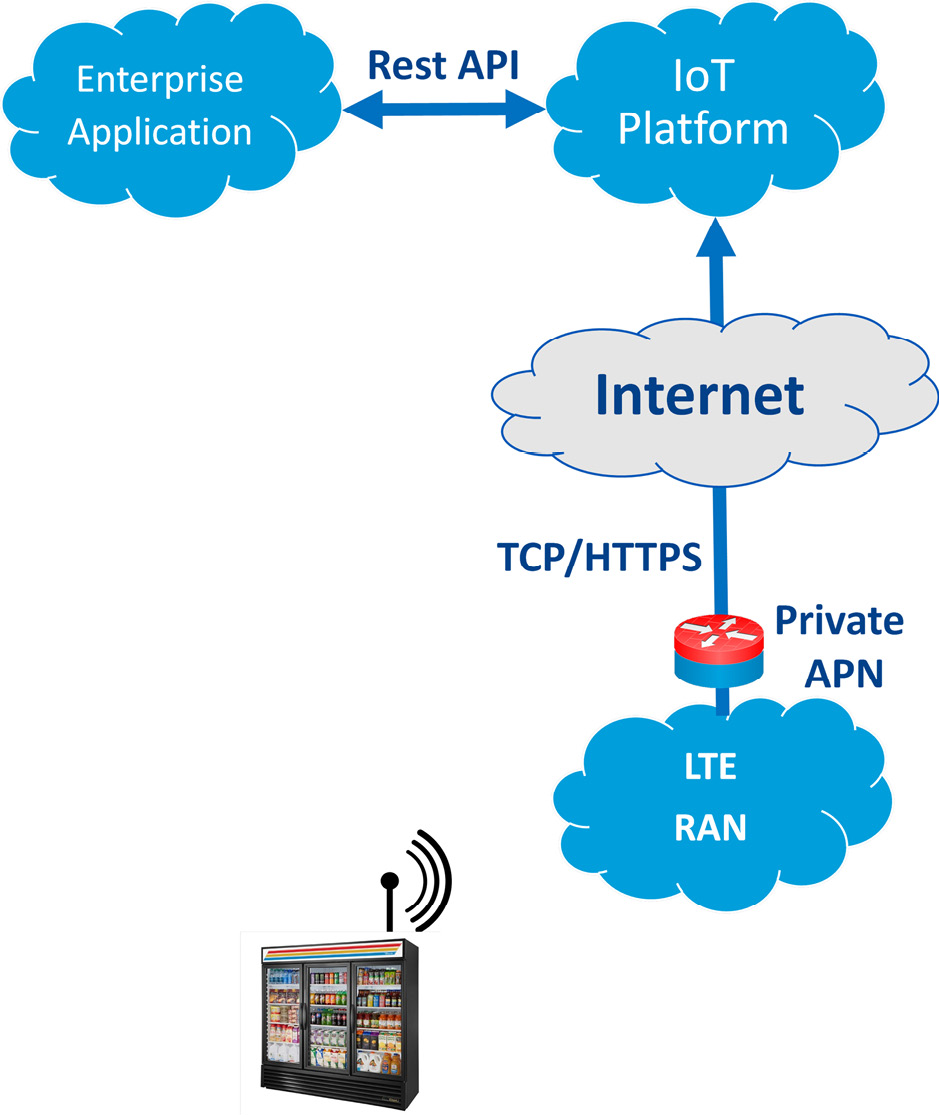Analyzing the network architectures
We will now use the basic IoT architecture presented in Figure 2.2 in Chapter 2, Understanding IoT Devices and Architectures, as shown again in Figure 8.5 here, to analyze the critical architecture decisions for the Connected Cooler and Smart Label solutions:

Figure 8.5 – High-level IoT protocol stack
A common theme in our review is the trade-off between low power and robust, secure communication between the IoT device and enterprise IoT application. Let us begin with the Connected Cooler solution.
Connected Cooler
Based on the business case and high-level requirements presented earlier, the Connected Cooler device is primarily powered and needs to securely report temperature and door openings for usage and product integrity data to the enterprise application, as shown in Figure 8.6:

Figure 8.6 – High-level Connected Cooler network architecture



